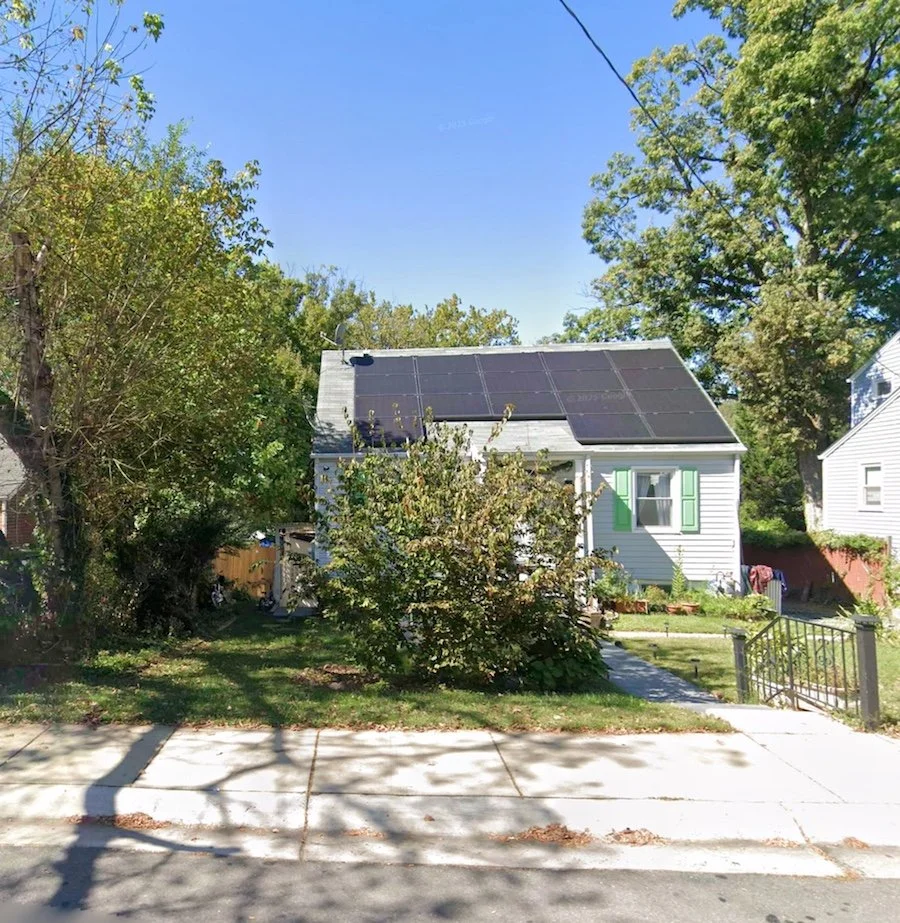“The Water is Wide, Daisy Bell” by Andrew Stiller (1987)
We lived in a small Cape style house in Glenmont Maryland from about 1950-57. My father bought it on the G.I. Bill in 1946 or 1947 for $10,000. (I see that it was sold in 2024 for $555K). The split level “Jewish” neighborhoods, like Bannockburn, were apparently too expensive, at $12K. My dad was working as a staffer on the Hill in the early 1950’s, for the Sub-Committee on Antitrust and Monopoly. We drove him to the B&O train at the Forest Glen “Castle Station” every morning in our 1940 Oldsmobile (with running boards) to go to work in one of the WWII “temp” quonsets (it was “E” Building) that persisted on the Mall for decades after the war. Glenmont was still farmland and woods in 1950, and was being converted to the “Little Boxes” housing developments of the baby boom. The woods were disappearing before my eyes as a child, but I could still pack a Skippy’s peanut butter on Pepperidge Farm bread and wander off into the woods by myself. There were few fences between lots, and kids roamed freely, taking shortcuts through other people’s yards. Some of the neighborhood kids took advantage of the newness of the storm water system by crawling, climbing, and skating through the sewer tunnels. We would find Indian head pennies, arrowheads, and Civil War bullets when people dug up the soil for gardening. Rose quartz and mica were common. There was a feeling that the War, Civil, that is, had just recently concluded. The Washington Post ran a story about the last veteran of that War finally going to his eternal reward. There were slave houses just to the north in Olney or Rockville, and an abandoned blacksmith shop on Georgia Ave in Silver Spring, about where the Beltway is now. My neighborhood friends regarded me as a “Yankee” because we had moved back from Boston, and I had a bit of an accent. The Washington Post advertised “Help Wanted, White” and “Help Wanted, Colored”, and just a few miles away in Virginia, there were separate drinking fountains and bathrooms.
Our pediatrician was Dr. Stiller on Georgia Ave and Plyers Mill Rd. I don’t remember him, but I remember the intersection. In 1969 I was a music student at SUNY Buffalo, and one of the composition students in the department was Andrew Stiller, son of that pediatrician. I mentioned it to him, but he was not impressed. I would see him frequently in the basement practise rooms of Baird Hall. He was working on a thorough and meticulous notation of Beatles Songs at the time.
Many years later I Googled Andrew Stiller, and found this composition that he had written in 1987 for his sister’s wedding. In some strange way it brought back memories of Glenmont/Wheaton of 1955. I don’t know why, but his evocation of the Appalachian tune “The Water is Wide” moves me deeply, as if it comes out of that mica schist soil. Andrew treats it with the respect that it deserves, as if we share that history, even though he, contemporary composer that he is, makes it work in a bitonal variation. “Bicycle Built for Two” is one of a few songs that my dad would sing in the shower, when we lived in Glenmont. I don’t remember him ever singing after we moved to St. Louis in 1957.
